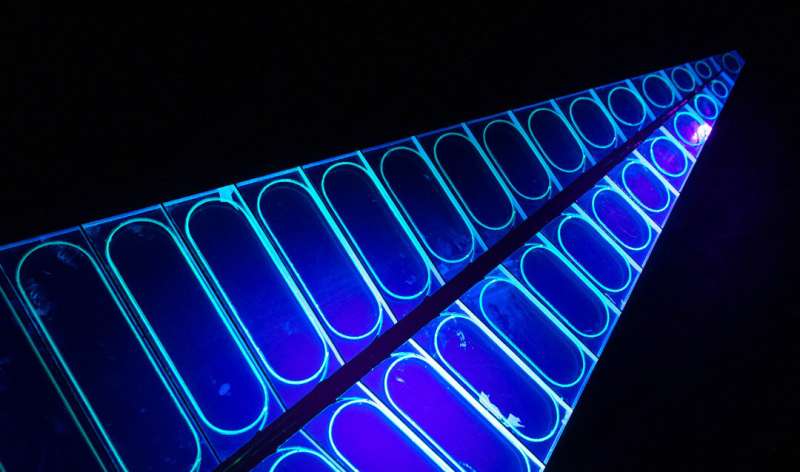This article has been reviewed according to Science X's editorial process and policies. Editors have highlighted the following attributes while ensuring the content's credibility:
fact-checked
trusted source
proofread
Physicists lead experiments to explore the force that binds the universe

The universe began about 14 billion years ago with a single point that contained a vast array of fundamental particles, according to the prevailing theory known as the Big Bang. Under the pressure of extreme heat and energy, the point inflated and then expanded to become the universe as we know it. That expansion continues to this day.
Unlocking the mysteries of what happened in that first instant is a key subject of nuclear physics research. Rosi Reed, associate professor, and Anders Knospe, assistant professor―both in the Department of Physics―are on the leading edge of that research, probing the nature of that initial matter created, quark-gluon plasma, a fluid made up of subatomic particles. With support from the National Science Foundation, they have built a highly-specialized detector to measure aspects of the universe that have never before been measured.
Reed and Knospe are installing their event plane detector at Brookhaven National Laboratory's Relativistic Ion Collider (RHIC) in Long Island, New York, one of only two operating particle collider facilities in existence. They are running experiments to forward their collaborative and individual research on the strong nuclear force, one of the four fundamental forces of nature, along with gravity, electromagnetism and the weak nuclear force. The strong force holds atomic nuclei together.
Their detector is part of the sPHENIX initiative, a "radical makeover" of the original Pioneering High Energy Nuclear Interaction eXperiment (PHENIX) facility, designed to investigate high energy collisions of heavy ions and protons. It will include new components that significantly enhance scientists' ability to learn about quark-gluon plasma.
"At the collider, we can see what―in the first 10 microseconds or so―the universe looked like," says Reed.
Their event plane detector is designed to measure the trajectories of fundamental charged particles post-collision.
"If you have two nuclei that are colliding with each other, unless it's a head-on collision, you will have different orientations of the nuclei with a line connecting their centers, horizontally or vertically. This is called the event plane," says Knospe. "In addition to mapping the event plane, the detector will help us quantify how violent a collision it was. Just by measuring the number of particles, we can estimate whether it was a head-on collision, or a very glancing peripheral collision."
Building the detector was a labor-intensive process. A number of students, some with the support of a National Science Foundation Research Experiences for Undergraduates award, worked with Reed and Knospe to build parts of it, including the scintillator panels. The panels light up when struck by a charged particle, which allows the particle's position to be measured.
The detector, designed to be an "add-on" to sPHENIX , "looks like two disks and will, essentially, go on either side of sPhenix, right inside the magnet," she says. "The disks will measure where two charged particles or ions collide and will help answer a lot of questions and determine important measurements."
Reed, whose work focuses on examining the particle jets, or the spraying particles, that fly out from the high-energy collisions, says that among the major scientific questions that the data collection and analysis could help answer are: Why is there more matter than antimatter in the universe? Why did the Big Bang create coldspots and hotspots which, in some cases, coalesce into galaxies and other entities? Her work is supported by a National Science Foundation CAREER Award.
Knospe is focused on using heavy subatomic particles called quarkonia to probe the quark-gluon plasma and characterize its properties in detail. His work is supported by a Department of Energy CAREER Award.
Ultimately, Reed's and Knospe's work at the collider will allow for a better understanding of the strong force or, as Knospe puts it—"how this big soup of all these subatomic particles came together to become this new state of matter or really, the very oldest."
Provided by Lehigh University





















